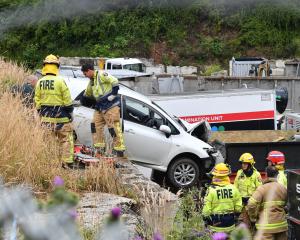Greater recognition of the fact that 96% of New Zealand's sovereign estate lay beneath the sea was needed, GNS Science geologist Dr Cornel de Ronde, said when commenting on a paper on the future of marine resources by the Royal Society released yesterday.
New Zealand's exclusive economic zone (EEZ) and extended continental shelf cover an area of 6 million sq km - more than 20 times the country's land area.
It is the fourth-largest EEZ in the world and similar in size to the ocean area claimed by the United Kingdom.
The report found appropriate management frameworks were critical if New Zealand was to develop its marine resources efficiently and responsibly as there was a great deal of uncertainty about the extent of many mineral deposits, how they were distributed and how profitable they would be to extract.
During a Science Media Centre briefing, Dr de Ronde said New Zealand was "a very large continent" the size of Australia, not just a "couple of small islands".
"It's a very large chunk of real estate."
The EEZ could make New Zealand a "rich nation" but much was not known about the vast resources, including gas, nickel and oil, it contained.
"There is a tremendous opportunity ... to harvest what we have out there in the ocean."
The only way to change that was to invest more heavily in scientific surveys and research and introduce an offshore management tool similar to the Resource Management Act, he said.
Legislation targeting environmental impacts from marine resource use in the EEZ was before a select committee.
The University of Otago's Dr Ross Vennell, one of the report's reviewers, said New Zealand was incredibly well placed to take advantage of wave and tidal energy, but technology was still in its early stages and as a result so was knowledge of environmental impacts.
Waikato University chairman of coastal sciences Prof Chris Battershill, a contributor to the Royal Society paper, said while the EEZ was the fourth largest in the world it produced only 1% of the global fish catch.
One way of recognising financial value from the EEZ was through "biodiscovery" and some of the biologically active chemicals in the EEZ could have commercial value as pharmaceuticals.
"New Zealand is a biodiversity hot spot."
However, there was a concern the country was losing some of its biological diversity through pollution and sedimentation along its coasts.
If New Zealand was to exploit the biological and mineral resources of the EEZ, it was important the country was ready to respond quickly to any incident, Prof Battershill said.
Issues such as fish dumping were a problem but could be curtailed as there were uses for less desirable fish species, with marine protein in high demand for products such as feed for the aquaculture market.
"Given a mechanism to return it to shore ... would give us a better ability to estimate stock."
Victoria University Institute of Policy Studies senior associate Dr Michael McGinnis said it was vital to gain an understanding of the cumulative impacts on the marine environment from ocean acidification, climate change, overfishing and bottom trawling.
"As New Zealand has the right to use the resources, it is obliged to protect it and act as a good steward."
The country was a "hot spot" for marine mammals and bird life so any future use of marine resources would be based on how well the impact on marine life was managed, Dr McGinnis said.












